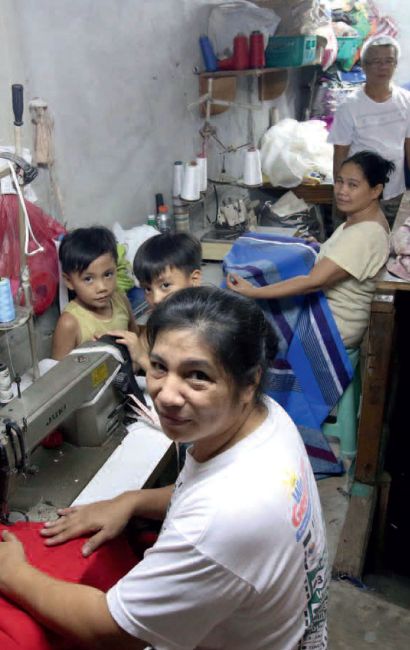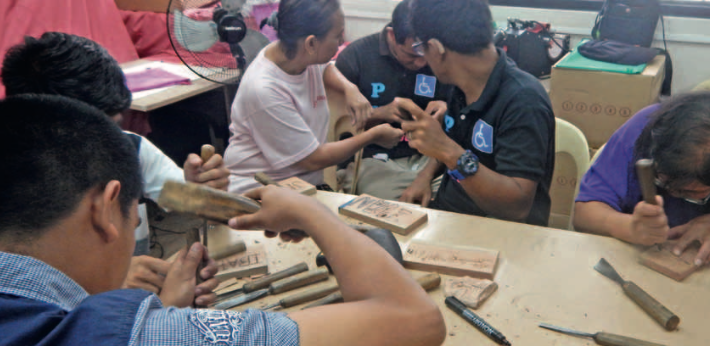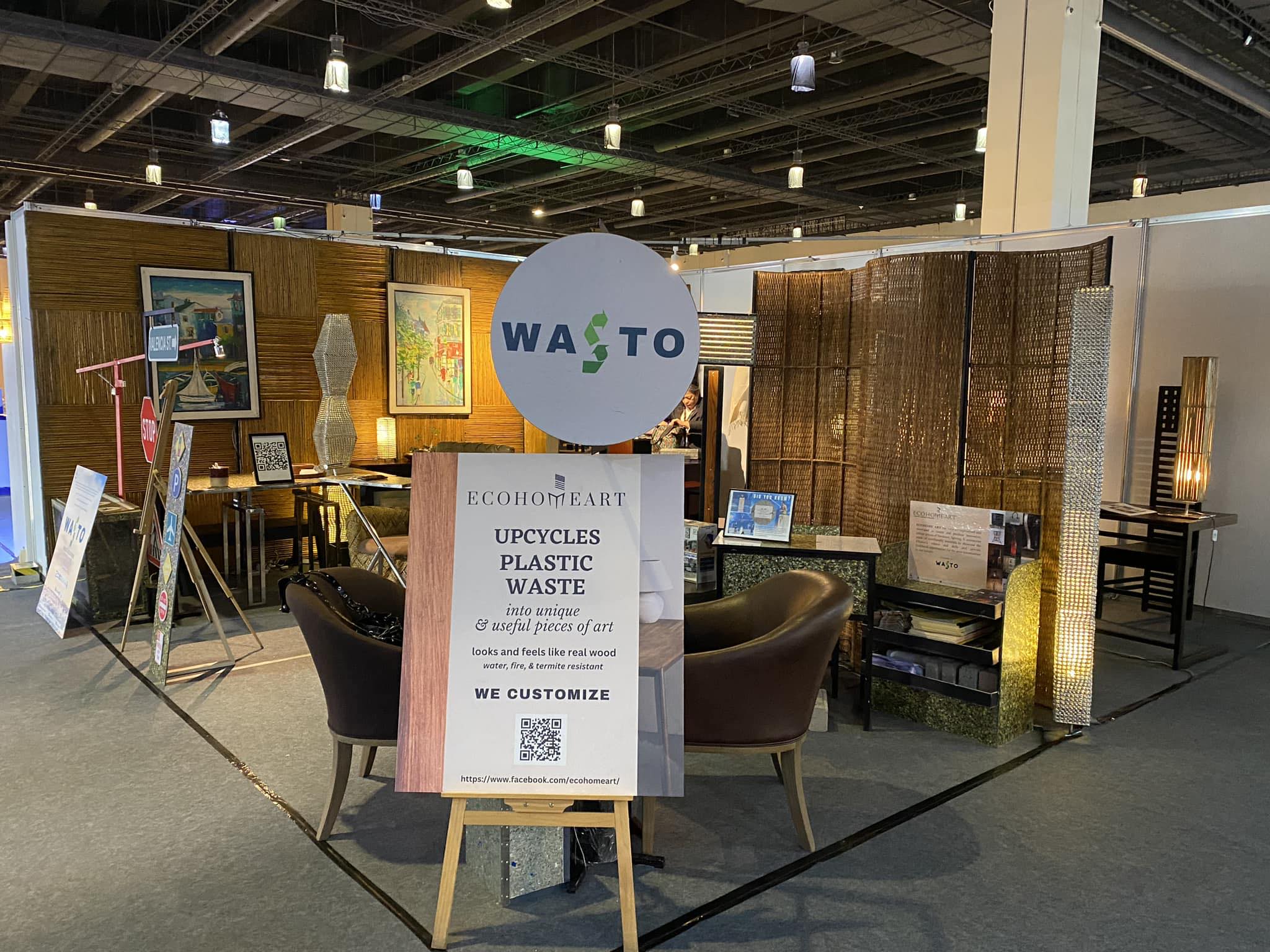Families should be able to nurture art at home
by: MICHELLE BAUTISTA-TAÑADA
While the arts and creative sectors begin to demonstrate their economic viability in the advent of the Fourth Industrial Revolution, Filipino parents are still likely to discourage their artistically inclined children from professionally pursuing their passion and talent.
The Fourth Industrial Revolution and the rise of the digital global economy have led to the recognition of the artistic and creative industries as essential drivers of contemporary economic growth. While in the past, the arts was seen as a non-profitable endeavor, often relegated to being just a hobby or a pastime, circumstances are changing.
As technology continues to advance, it is becoming increasingly important for businesses and organizations to incorporate creativity and innovation into their operations. The creative industry, which includes fields such as design, crafts, fashion, advertising, film and television, music, and gaming, has become an essential part of the global economy, generating significant revenue and providing employment opportunities for millions of people worldwide.
Art has always been an integral part of human expression and culture. It has the power to inspire, heal, and transform society. Unfortunately, a great number of Filipino parents remain pessimistic and discourage their children from pursuing the arts, as they believe it has limited career prospects and a low earning potential. This mindset can be detrimental to the creative aspirations of young Filipinos.
Family support is crucial in fostering artistic and creative talent in children. Parents play a significant role in creating an environment that encourages creativity and expression.
However, previous surveys and studies suggest a prevalent bias by Filipino parents against the arts and creative industry as a career choice for their children.
In a 2018 survey, Jobstreet found that 73% of Filipino parents preferred their children to pursue careers in engineering, medicine, or law, while only 5% preferred a career in the creative industry. Another survey conducted by the Cultural Center of the Philippines (CCP) in 2015 revealed that 75% of Filipinos surveyed believed that a career in the arts is not financially stable, and 57% thought that it is not a respectable profession.
If the Philippine government is serious in enabling capacities to capture emerging opportunities propelled by the increasing importance of the arts and creative industries in today’s economies, it has to start by addressing challenges faced by Filipino families in nurturing the arts at home.
National and local governments can begin by addressing the lack of funding and resources for arts education. Many schools and communities lack the necessary resources and funding to support arts education programs, making it difficult for aspiring artists to develop their skills. The government can address this by increasing funding for arts education programs and providing resources for community-based arts programs.
Another challenge is the lack of access to information and opportunities. Many families may not be aware of the opportunities available for their children in the arts and creative industries. The government can address this by providing information and resources to families, such as through a centralized database of arts programs and opportunities, or by partnering with local organizations to provide outreach and support.
Information on Opportunities is Key
Enabling understanding and appreciation within the family of the changing role of the arts and creative industries in the contemporary economy should be a key first step to challenging the prevailing prejudice.

One of the most significant developments in the artistic industry is the rise of digital media, which has made art more accessible to a global audience. Digital media has opened up new channels for artists to showcase and sell their works, whether through online marketplaces, social media platforms, or digital galleries. This has allowed artists to reach wider audiences, bypassing traditional barriers to entry, and earning more significant revenues than ever before.
Moreover, technology has enabled artists to explore new mediums and push the boundaries of traditional artistic forms. The use of digital tools and software has allowed artists to experiment with new techniques, such as 3D printing, virtual reality, and augmented reality, which have revolutionized the art world. As a result, new sub-fields of the arts, such as digital art, video game design, and web design, are gaining more significant traction in the market, and artists working in these fields are earning substantial revenues.
Another significant trend is the growing awareness of the importance of environmental sustainability, which has prompted more significant investment in eco-friendly products and services. This has created new opportunities for artists and creatives to leverage their skills to create innovative solutions that support sustainability goals. For instance, eco-designers who use sustainable materials, such as bamboo or recycled plastics, are gaining more recognition and earning higher revenues.
In terms of market channels, there are various avenues through which artists can monetize their works. For instance, online marketplaces, such as Etsy and Society6, enable artists to sell their art directly to consumers, without the need for intermediaries. Social media platforms, such as Instagram and Facebook, provide artists with a platform to showcase their works and build a following, which can translate into sales. Moreover, crowdfunding platforms, such as Kickstarter and Patreon, provide artists with a means to raise funds for their projects and connect with fans who are willing to support their artistic endeavors.


As a foundation that supports creative and eco-sustainable crafts, Balikatan sa Kaunlaran National Foundation believes in the importance of nurturing and cultivating creativity in Filipino families. Our goal is to empower communities to create sustainable livelihoods through the use of traditional arts and crafts techniques that are eco-friendly.
One of our main initiatives is the promotion of Filipiniana dolls, which are intricately designed dolls that showcase the traditional clothing and culture of various regions in the Philippines. Through our support of local artisans and small businesses, we have been able to create a sustainable market for these unique and beautiful dolls.
At the heart of our work is grassroots community engagement. We partner with local organizations to provide training and resources for those interested in pursuing creative and eco-friendly crafts. Through these partnerships, we are able to support small enterprises and help them develop their skills and techniques to produce high-quality, marketable products.
By fostering creativity and entrepreneurship at the community level, we are able to contribute to the growth and development of the creative industry in the Philippines. This not only provides economic opportunities for individuals and families, but also helps preserve traditional art forms and cultural heritage.
Our work has been able to support the government’s efforts to cultivate creativity and sustainable practices in the Philippines. We believe that by supporting small businesses and empowering communities, we can help build a brighter future for all Filipinos.
Through our efforts, we have seen the positive impact of creative and eco-friendly crafts on families and communities. By promoting sustainable practices and fostering entrepreneurship, we are helping to build a more resilient and sustainable future for the Philippines.
